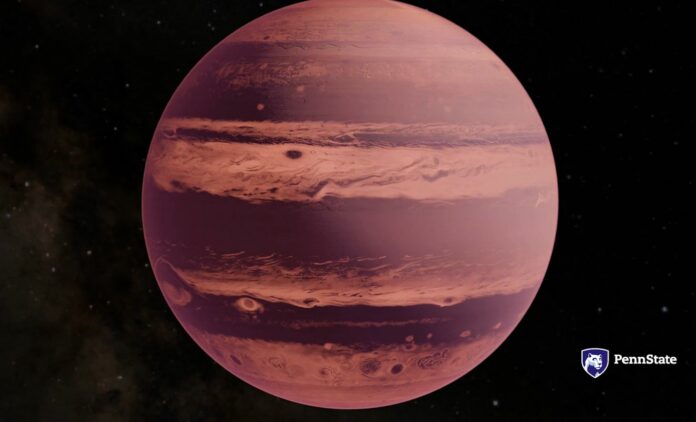This giant planet you’ve never heard of poses intriguing questions for astronomers and disrupts long-held beliefs about the formation of planetary systems.
Astronomers have stumbled upon a planetary giant in an unexpected cosmic setting, potentially reshaping our understanding of how solar systems are formed.
This new planet, vastly larger than its host star, presents a scenario that defies conventional astronomical expectations.
Located 51 light-years away, the planet orbits LHS 3154, an ultra-cool dwarf star significantly smaller than our sun, being only about one-ninth its mass.
The planet, designated LHS 3154b, is a colossal entity in this context, boasting a mass 13 times that of Earth.
Penn State astronomer Suvrath Mahadevan, a key researcher in this study, expressed surprise at this finding.
“We wouldn’t expect a planet this heavy around such a low-mass star to exist.”
This discovery was made using the Habitable Zone Planet Finder (HPF) at Texas’ McDonald Observatory, an instrument typically employed to detect cooler stars like LHS 3154, which are considered prime candidates for hosting planets with surface water.
Although LHS 3154b is not the most massive exoplanet known (that title likely belongs to the gas giant HAT-P-67 b), its relative size compared to its star is unprecedented.
The formation of planetary systems, as understood today, involves the coalescence of dust, gas, and pebbles from a circumstellar disk into progressively larger entities, eventually forming planets.
However, the sheer size of LHS 3154b suggests it would have required a volume of dust approximately ten times greater than what was available around its nascent star, indicating such systems might be exceedingly rare.
The research team hopes further study will shed light on how such a large planet could form around a comparatively small star.
“This discovery really drives home the point of just how little we know about the universe,” Mahadevan stated, highlighting the finding’s significance.
Their groundbreaking research was published on November 30 in the journal Science, opening a new chapter in the quest to understand the complexities of the cosmos.
Image Credit: Still from video
